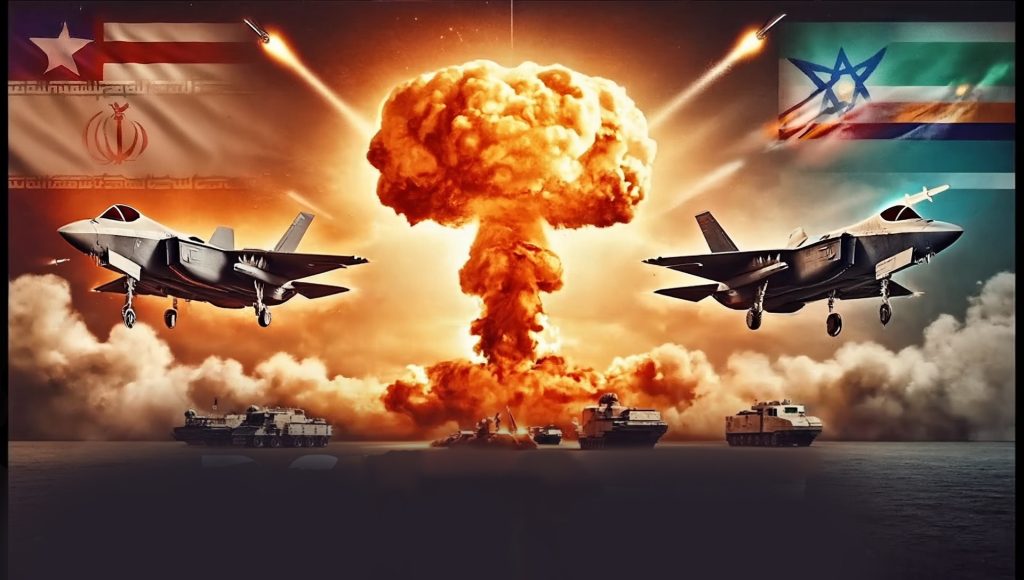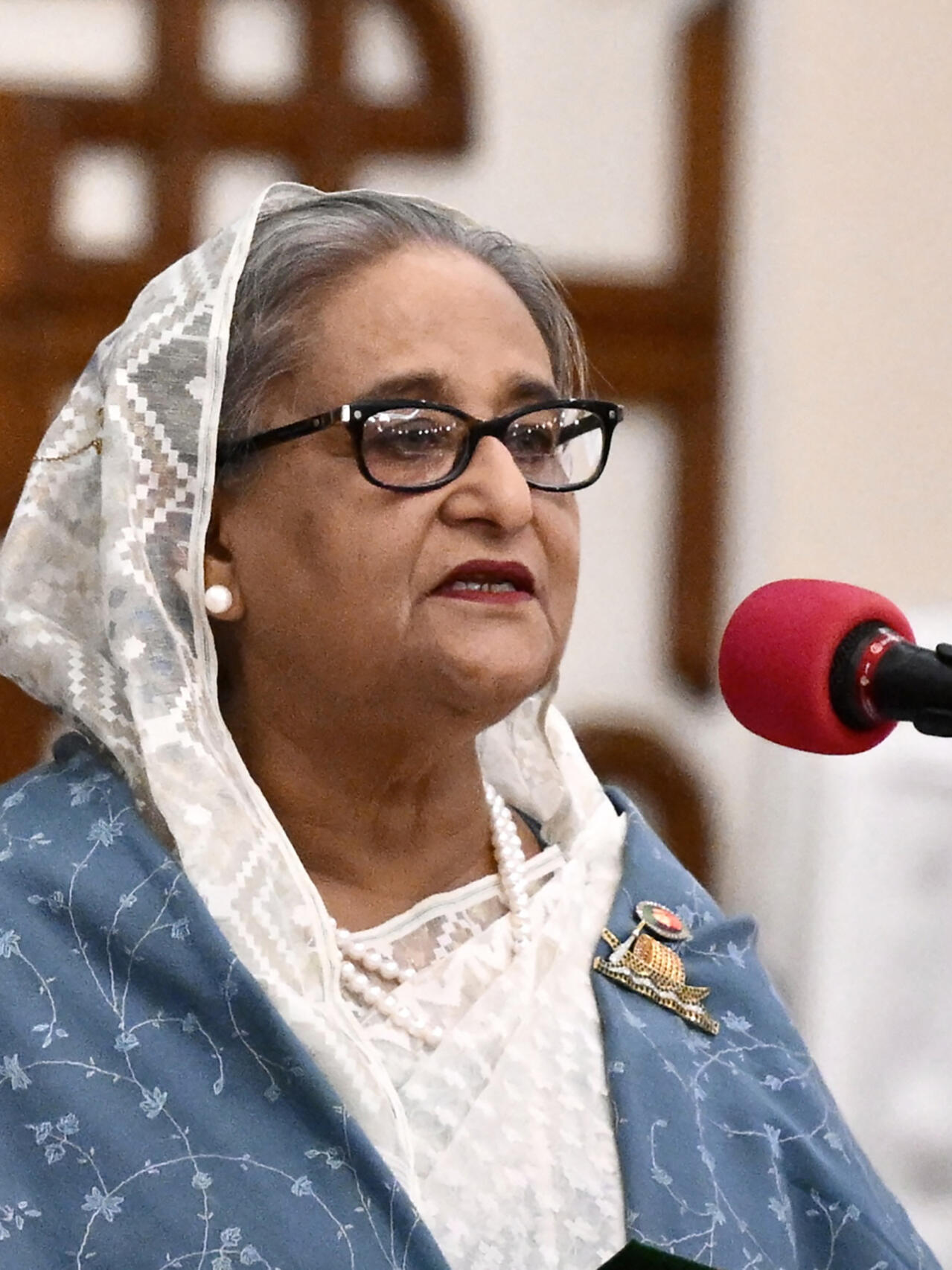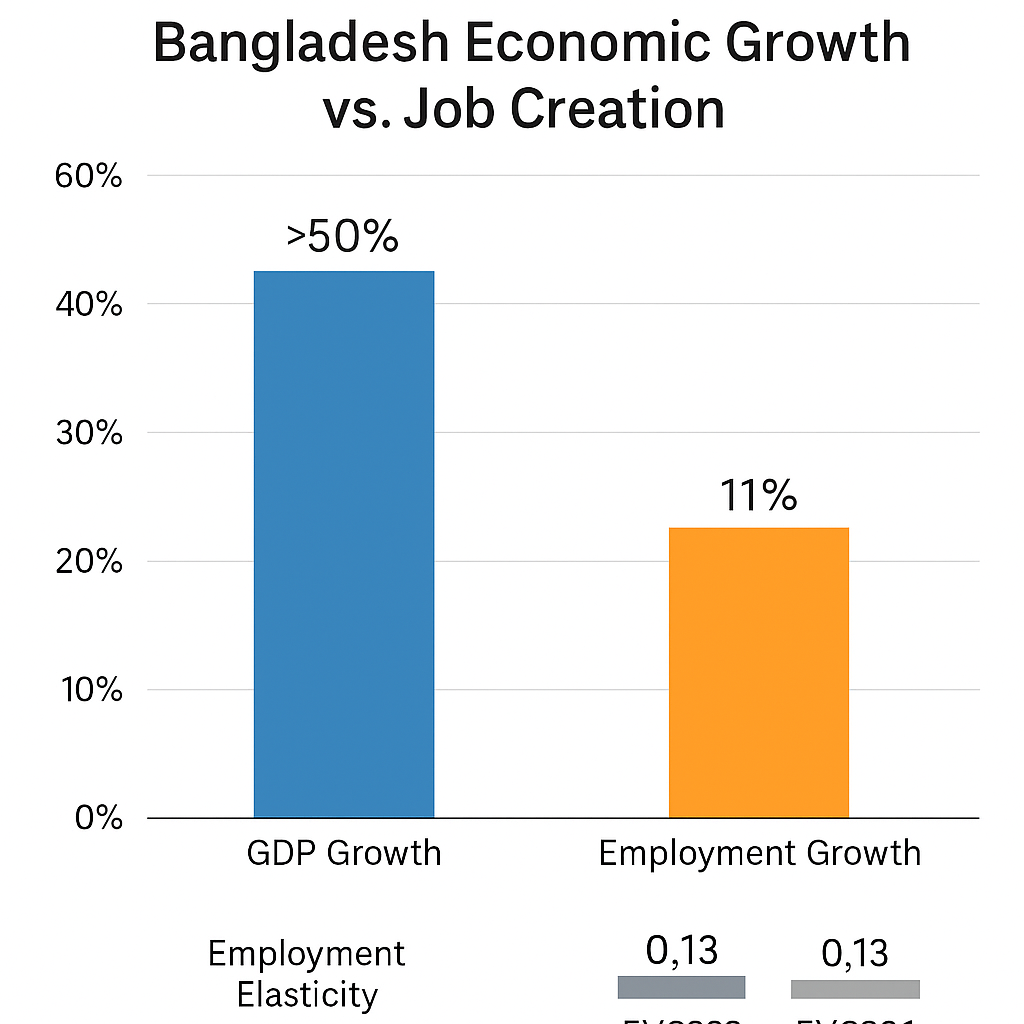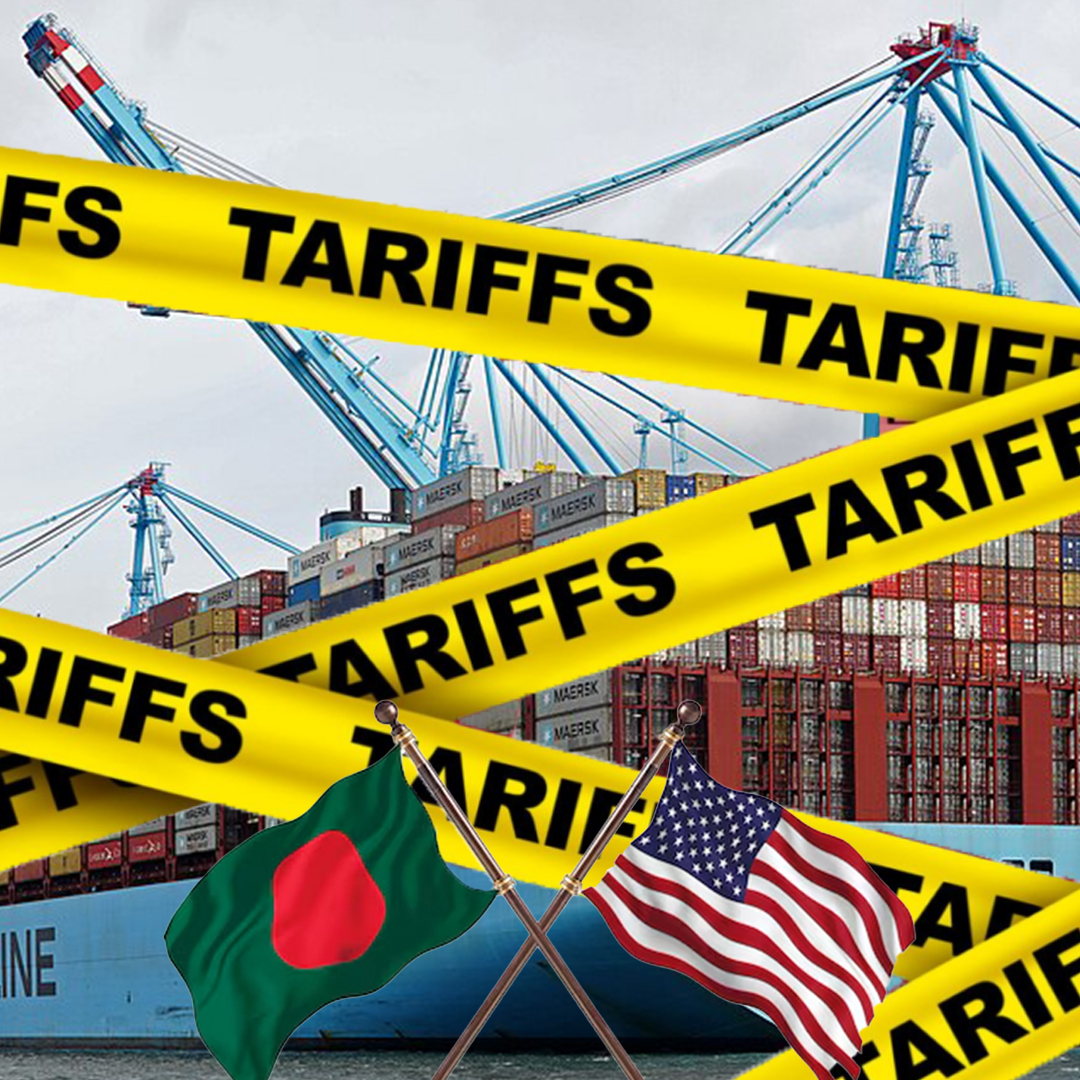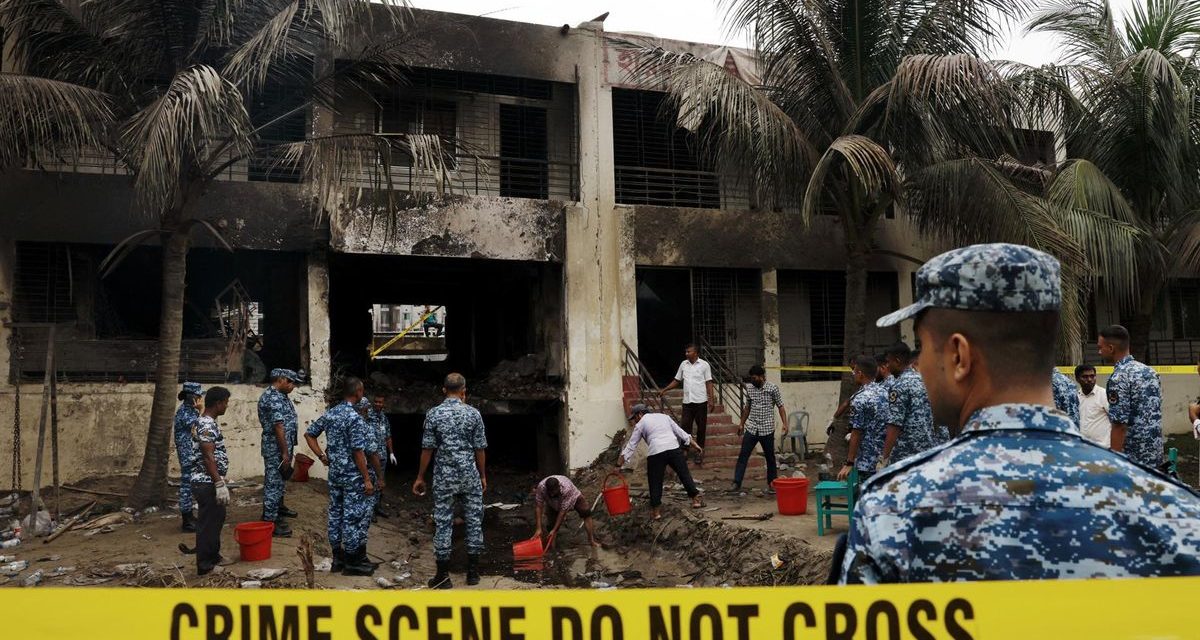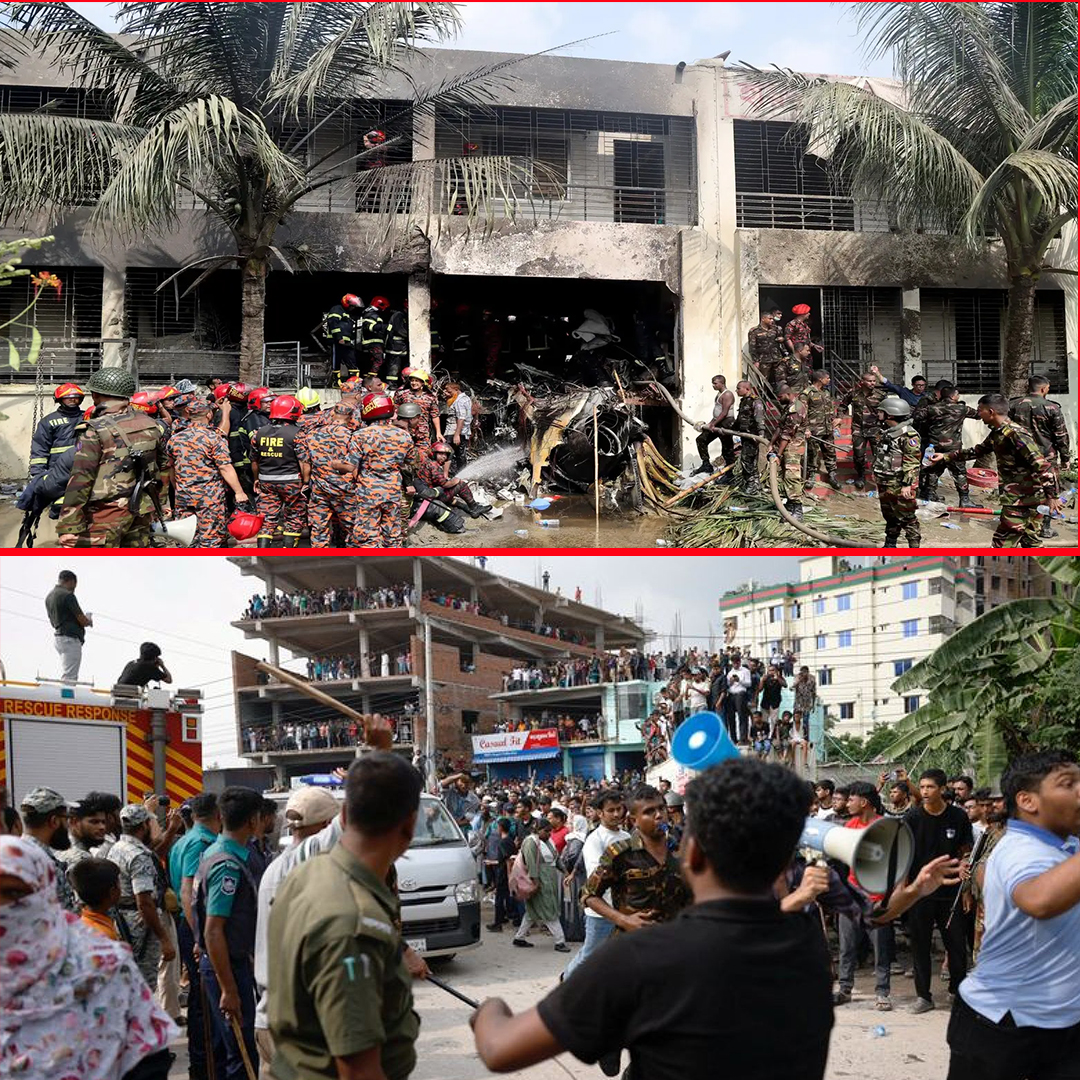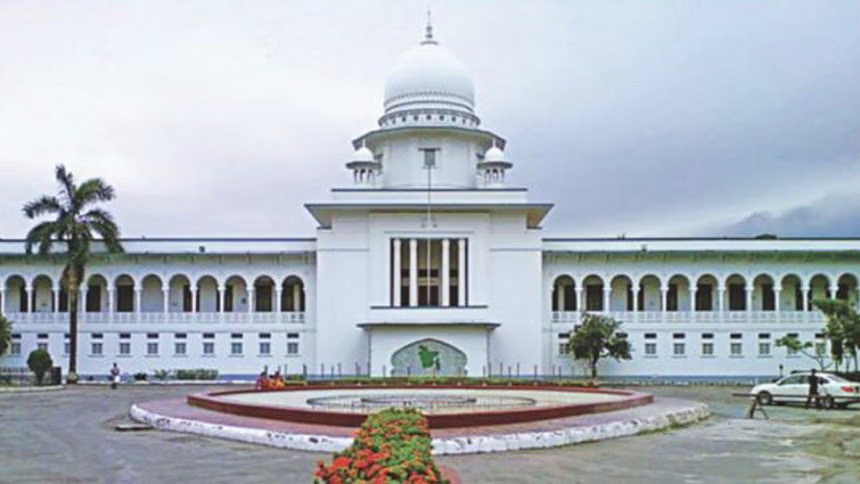Trending News:
Leaked Audio Reveals Sheikh Hasina Ordered Deadly Crackdown on 2024 Bangladesh ProtestersBangladesh’s Economy Grew 50% in 8 Years, But Job Creation Lagged BehindBangladesh Urgently Seeks U.S. Trade Talks to Avoid 35% Tariff on Garment ExportsDeath Toll Rises to 31 in Bangladesh Air Force Jet Crash at Dhaka SchoolBangladesh Air Force Jet Crash Kills 27, Including 25 Children, at Dhaka SchoolChief Justice Appoints 2 Justices — Justice Rezaul Haque and Justice Farah Mahbub — as Chamber Judges of Supreme CourtBangladesh Air Force F-7 Trainer Jet Crashes in Uttara’s Diabari AreaUS Imposes 50% Tariff, Threatening Bangladesh’s Booming Synthetic Footwear ExportsIndefinite Curfew Imposed in Gopalganj Following Deadly Clashes Leaving 4 Dead and 50 Injured98% of Bangladesh Exports to UK Remain Duty-Free Under New SchemeBangladesh Political Violence: 4 Killed at NCP Youth Rally in GopalganjIndian Astronaut Shubhanshu “Shux” Shukla Returns Safely from Historic 18-Day Space MissionBangladesh Bank Buys $313M to Support Dollar RateGarment Factories in Chattogram Brace for Crisis as US Tariffs Loom(15/7/25)Tragic Air India Flight AI-171 Crash: Preliminary Report Reveals Sudden Fuel Cutoff as Key CauseJute Mills in Bangladesh: Thousands of Workers Still Await Reopening After 2020 ClosuresGas Explosion in Sutrapur Critically Injures 5 of a FamilyChina Endorses Bangladesh Reform Initiatives Ahead of 2026 ElectionsImpact of U.S. Tariffs on Bangladesh Garment Exports: 35% Duty Threatens Industry GrowthOver 500 Drones: Record Barrage Devastates Kyiv in Major Russian EscalationEscalating Tensions as 16 Senior Jatiya Party Leaders Defy Dismissal, Claim Unconstitutional Power Grab147 Fake Offices, Real Ambitions: Phantom Parties Flood EC with Bogus ApplicationsFormer Chief Election Commissioner ATM Shamsul Huda Dies at 83UN Resolution on Rohingya: 141 Nations Back Bangladesh’s Push for Global Action5 BRICS Nations Unite at Rio Summit to Condemn U.S. TariffsOver 11,000 Dengue Cases Reported in Bangladesh as Infections Surge Sharply in Early JulyHigh Court Stays Fine in Magura Child Rape-Murder Case as Appeal Moves ForwardThe Day Bangladesh Rose: July 1 Uprising That Shook a NationRising Dengue Cases in Bangladesh: 42 Deaths and Nearly 10,000 Hospitalized in 202530 Charged in Abu Sayed Murder: Justice Process Begins Under ICT in 2025July Charter 2025 in Limbo as Political Talks Stall Over Key ReformsIran Strongly Condemns Former US President Trump’s Claim of Saving Khamenei in 2025, Calls Remarks Disrespectful4 killed, 14 injured in bus-truck collision on Dhaka-Mawa ExpresswayBangladesh Election Commission Sets September Deadline for Poll Materials Procurement-Iran’s Supreme Leader Dismisses 3 U.S. Strikes as Ineffective in Defiant ResponseJames Webb’s 1st Alien Planet Discovery: A Remarkable Leap in Space ScienceBangladesh Declares Three New National Days, July 5 Named ‘July Mass Uprising Day’West Bengal Migrants Branded as Bangladeshis: Over 300 Detained Amid Rising Harassment in BJP-Ruled States Sparks OutrageDiesel Shipment Costs Bangladesh Tk 68 Crore Extra Due to Global Price SurgeSirajganj: Driver Murdered and Auto-Rickshaw Stolen; 4 Arrested Including a WomanGoogle Pay Launches in Bangladesh: 5 Highlights from the Official Rollout EventIMF অনুমোদন করেছে 1.33 বিলিয়ন ডলারের বড় সহায়তা প্যাকেজ বাংলাদেশের অর্থনীতিকে চাঙ্গা করতে🦟 Dengue Outbreak in Bangladesh: Over 60% of Patients Flock to Dhaka Hospitals as Rural Crisis GrowsIran’s Missile Attack on U.S. Base in Qatar: 14 Missiles Fired Amid Rising Middle East Conflict১৮তম শিক্ষক নিবন্ধনের viva পরীক্ষায় 20 হাজারের বেশি প্রার্থীর ফলাফলে বৈষম্যের অভিযোগ, প্রতিবাদে পুলিশ জলকামান ও সাউন্ড গ্রেনেড ব্যবহারIndia Permanently Ends 64-Year-Old Indus Waters Treaty With PakistanIndia’s Operation Sindhu: Over 1,100 Evacuated as Nepal, Sri Lanka Join Rescue Mission from Iran5 সদস্যের BNP প্রতিনিধিদল চীনের উদ্দেশ্যে রওনা, কূটনৈতিক সম্পর্ক জোরদারে নতুন পদক্ষেপ22 জুনের মধ্যে হল ছাড়তে হবে, ঢাকা মেডিকেল কলেজে একাডেমিক কার্যক্রম স্থগিতNo Technical Issues Found in Crashed Dreamliner Before Flight: Air IndiaDeadly Collision on Mymensingh-Haluaghat Road: Seven Killed in Phulpur Bus and Human Haulier CrashBangladesh High Commission Hosts 53rd Independence Day Celebration in New Delhi to Strengthen India–Bangladesh TiesIran Missile Hits Israeli Hospital as Israel–Iran Conflict Escalates into Second WeekBNP Delegation Heads to Beijing to Forge Deeper Party‑to‑Party TiesBangladeshis’ Deposits in Swiss Banks Surge 33 Times in One Year19 জুন ডিবির অভিযানে গ্রেফতার সাবেক পরিকল্পনা প্রতিমন্ত্রী শামসুল আলমশেখ হাসিনার বিরুদ্ধে আদালত অবমাননার শুনানি আজ, অ্যামিকাস কিউরি নিয়োগ ট্রাইব্যুনালেরপল্টনে মাদক কারবারিদের গুলিতে ডিবি পুলিশের 2 সদস্য গুলিবিদ্ধ, আটক 3এনসিপি সমর্থনে জাতীয় সাংবিধানিক কাউন্সিলে ঐক্যমত্যের আহ্বান করেন নাহিদ ইসলামছুটি শেষে বিচার কার্যক্রম পরিচালনার জন্য হাইকোর্টের 49 টি বেঞ্চ পুনর্গঠন করলেন প্রধান বিচারপতিবাংলাদেশ নিউজে শান্তের 100 নম্বর জার্সির পুরনো টেস্ট ব্যাটিং মুহূর্ত পুনরুজ্জীবিত4 সমুদ্রবন্দরে ৩ নম্বর সতর্ক সংকেত: অতি ভারী বৃষ্টির আভাসে সতর্ক সংকেত জারি16 জুন 2025 নারায়ণগঞ্জ গণপিটুনি: যুবকের নৃশংস খুনে ন্যায়বিচার সংকটে দেশIsrael Devastates IRIB Headquarters: Iran Urgently Appeals to Trump for Immediate CeasefireLaw Enforcers Poised for 2025 Election Security, Ready to Back EC at a Moment’s Notice with Unwavering Commitment22বছরের গৃহবধূকে রংপুরে যৌতুকের জন্য আগুনে পুড়িয়ে হত্যা, পুলিশের গাফিলতির অভিযোগসিপিসি (সংশোধনী) অধ্যাদেশ, 2025: বাংলাদেশে ন্যায়বিচারে নতুন যুগের সূচনা—দ্রুত, স্বচ্ছ ও সাশ্রয়ী বিচার2025 সালের ঈদের 10 দিনের দীর্ঘ ছুটি শেষে ঢাকায় ফিরছে লাখো কর্মজীবী, কাল থেকে খুলছে অফিস-আদালতIran’s Largest-Ever Missile Barrage Strikes Tel Aviv & Jerusalem in Retaliation for Israeli Air Raidsঈদের ছুটি শেষে ঢাকায় কর্মজীবীদের ভিড়, স্টেশন ও লঞ্চঘাটে যাত্রীদের উপচে পড়া উপস্থিতিইসরায়েল ইরানের ওপর ব্যাপক সামরিক হামলা চালালআহমেদাবাদ বিমান দুর্ঘটনা: এয়ার ইন্ডিয়া AI171 বিধ্বস্ত, মাত্র একজনই বাঁচলেনমে ২০২৫-এ সড়ক দুর্ঘটনায় ৬১৪ প্রাণহানি: যাত্রী কল্যাণ সমিতির প্রতিবেদনে রোড নিরাপত্তা সংস্কারের জরুরি আহ্বান২০২৫-২৬ বাজেটে দরিদ্রদের জন্য ৩৭,০৭৬ কোটি টাকার সামাজিক নিরাপত্তা বরাদ্দজুলাই সনদ নিয়ে গণভোট নয়: বাংলাদেশে রাজনৈতিক ঐকমত্যে বিশ্বাসী মুহাম্মদ ইউনূসকরোনা নিয়ে আতঙ্ক নয়, সতর্কতা জরুরি: স্বাস্থ্যের ডিজিবাংলাদেশে আগামী পাঁচ দিনে বৃষ্টি ও বজ্রঝড়ের পূর্বাভাসইউনুস–তারেকের লন্ডন বৈঠক বাংলাদেশের রাজনীতিতে মোড় ঘুরিয়ে দিতে পারেজুলাই গণহত্যা মামলার তদন্তে ধীরগতি, প্রযুক্তির মাধ্যমে গতি আনার প্রচেষ্টাআজকের বাংলাদেশি টাকায় বৈদেশিক মুদ্রার বিনিময় হার ও প্রভাববিশ্বকাপ বাছাই পর্বের নাটকীয় রাত: ইতালি, বেলজিয়াম ও ক্রোয়েশিয়ার জয়খাদ্য নিতে জড়ো হওয়া বেসামরিক মানুষদের ওপর গুলি, নিহতদের মধ্যে নারী-শিশুও; আন্তর্জাতিক মহলে তীব্র নিন্দা ও যুদ্ধাপরাধের অভিযোগঈদে বিএনপির কেন্দ্রীয় নেতাদের জন্য ‘প্রেরণার উৎস’ খালেদা জিয়াডিএসসিসি ৮ ঘণ্টার মধ্যে ঈদের সব পশুর বর্জ্য ১০০% অপসারণে সফলRussian Drone and Missile Barrage on Kharkiv Kills Three, Injures Dozensজাতীয় ঐক্য ও সংগ্রামের প্রতীক হয়ে নতুন ডিজাইনের বাংলাদেশি নোটসারা দেশে উৎসবমুখর পরিবেশে ২০২৫ সালের ঈদুল আজহা উদযাপনঈদুল আজহার প্রাক্কালে জাতির উদ্দেশ্যে ভাষণ দেবেন ইউনুস: জাতি অপেক্ষায় আশার বার্তা২০২৫ সালে পদ্মা ও যমুনা সেতুতে রেকর্ড টোল আদায়, যানবাহনের ব্যাপক চলাচলTrump–Musk Feud Erupts: Threats of Contract Cuts and Impeachment Support Shake U.S. Politics and MarketsAt Least 10 Killed in Israeli Airstrikes on Gaza as Conflict Escalatesঈদযাত্রা শুরু: ঢাকাছাড়া মানুষের ঢল, শুরুর দিনেই চাপে পরিবহন ব্যবস্থা স্বস্তিতে শুরু, বিকেলে বাড়ে দুর্ভোগRohingya Refugees Struggle Amid Funding Crisis in Bangladesh CampsUS-Backed Gaza Aid Centres Temporarily Close After 27 Killed in Israeli Fireঈদের ছুটির আগেই ব্যাংকে নগদ উত্তোলনের হিড়িক১৮ বছরের স্বপ্নপূরণ: আরসিবি’র প্রথম আইপিএল জয় নিয়ে উল্লাসে মাতোয়ারা ক্রিকেটবিশ্ব২০২৫ আইপিএল ফাইনাল: প্রথম শিরোপার খোঁজে আরসিবি ও পাঞ্জাব কিংস মুখোমুখি২০২৫-২৬ অর্থবছরের জন্য রক্ষণশীল বাজেট: সংকোচন নাকি স্থিতিশীলতা?নন্দিত অপরাধী ছোট সাজ্জাদের স্ত্রী তামান্না পাঁচ হত্যা মামলায় গ্রেপ্তার দেখানোভারতের উত্তর-পূর্বাঞ্চলে প্রবল বর্ষণে ভূমিধস ও বন্যা: ৩০ জনের মৃত্যু
Fri. Dec 5th, 2025
-
Or check our Popular Categories...
-
Tomorrow.io Weather for Dhaka Loading weather...
Trending News:
Leaked Audio Reveals Sheikh Hasina Ordered Deadly Crackdown on 2024 Bangladesh ProtestersBangladesh’s Economy Grew 50% in 8 Years, But Job Creation Lagged BehindBangladesh Urgently Seeks U.S. Trade Talks to Avoid 35% Tariff on Garment ExportsDeath Toll Rises to 31 in Bangladesh Air Force Jet Crash at Dhaka SchoolBangladesh Air Force Jet Crash Kills 27, Including 25 Children, at Dhaka SchoolChief Justice Appoints 2 Justices — Justice Rezaul Haque and Justice Farah Mahbub — as Chamber Judges of Supreme CourtBangladesh Air Force F-7 Trainer Jet Crashes in Uttara’s Diabari AreaUS Imposes 50% Tariff, Threatening Bangladesh’s Booming Synthetic Footwear ExportsIndefinite Curfew Imposed in Gopalganj Following Deadly Clashes Leaving 4 Dead and 50 Injured98% of Bangladesh Exports to UK Remain Duty-Free Under New SchemeBangladesh Political Violence: 4 Killed at NCP Youth Rally in GopalganjIndian Astronaut Shubhanshu “Shux” Shukla Returns Safely from Historic 18-Day Space MissionBangladesh Bank Buys $313M to Support Dollar RateGarment Factories in Chattogram Brace for Crisis as US Tariffs Loom(15/7/25)Tragic Air India Flight AI-171 Crash: Preliminary Report Reveals Sudden Fuel Cutoff as Key CauseJute Mills in Bangladesh: Thousands of Workers Still Await Reopening After 2020 ClosuresGas Explosion in Sutrapur Critically Injures 5 of a FamilyChina Endorses Bangladesh Reform Initiatives Ahead of 2026 ElectionsImpact of U.S. Tariffs on Bangladesh Garment Exports: 35% Duty Threatens Industry GrowthOver 500 Drones: Record Barrage Devastates Kyiv in Major Russian EscalationEscalating Tensions as 16 Senior Jatiya Party Leaders Defy Dismissal, Claim Unconstitutional Power Grab147 Fake Offices, Real Ambitions: Phantom Parties Flood EC with Bogus ApplicationsFormer Chief Election Commissioner ATM Shamsul Huda Dies at 83UN Resolution on Rohingya: 141 Nations Back Bangladesh’s Push for Global Action5 BRICS Nations Unite at Rio Summit to Condemn U.S. TariffsOver 11,000 Dengue Cases Reported in Bangladesh as Infections Surge Sharply in Early JulyHigh Court Stays Fine in Magura Child Rape-Murder Case as Appeal Moves ForwardThe Day Bangladesh Rose: July 1 Uprising That Shook a NationRising Dengue Cases in Bangladesh: 42 Deaths and Nearly 10,000 Hospitalized in 202530 Charged in Abu Sayed Murder: Justice Process Begins Under ICT in 2025July Charter 2025 in Limbo as Political Talks Stall Over Key ReformsIran Strongly Condemns Former US President Trump’s Claim of Saving Khamenei in 2025, Calls Remarks Disrespectful4 killed, 14 injured in bus-truck collision on Dhaka-Mawa ExpresswayBangladesh Election Commission Sets September Deadline for Poll Materials Procurement-Iran’s Supreme Leader Dismisses 3 U.S. Strikes as Ineffective in Defiant ResponseJames Webb’s 1st Alien Planet Discovery: A Remarkable Leap in Space ScienceBangladesh Declares Three New National Days, July 5 Named ‘July Mass Uprising Day’West Bengal Migrants Branded as Bangladeshis: Over 300 Detained Amid Rising Harassment in BJP-Ruled States Sparks OutrageDiesel Shipment Costs Bangladesh Tk 68 Crore Extra Due to Global Price SurgeSirajganj: Driver Murdered and Auto-Rickshaw Stolen; 4 Arrested Including a WomanGoogle Pay Launches in Bangladesh: 5 Highlights from the Official Rollout EventIMF অনুমোদন করেছে 1.33 বিলিয়ন ডলারের বড় সহায়তা প্যাকেজ বাংলাদেশের অর্থনীতিকে চাঙ্গা করতে🦟 Dengue Outbreak in Bangladesh: Over 60% of Patients Flock to Dhaka Hospitals as Rural Crisis GrowsIran’s Missile Attack on U.S. Base in Qatar: 14 Missiles Fired Amid Rising Middle East Conflict১৮তম শিক্ষক নিবন্ধনের viva পরীক্ষায় 20 হাজারের বেশি প্রার্থীর ফলাফলে বৈষম্যের অভিযোগ, প্রতিবাদে পুলিশ জলকামান ও সাউন্ড গ্রেনেড ব্যবহারIndia Permanently Ends 64-Year-Old Indus Waters Treaty With PakistanIndia’s Operation Sindhu: Over 1,100 Evacuated as Nepal, Sri Lanka Join Rescue Mission from Iran5 সদস্যের BNP প্রতিনিধিদল চীনের উদ্দেশ্যে রওনা, কূটনৈতিক সম্পর্ক জোরদারে নতুন পদক্ষেপ22 জুনের মধ্যে হল ছাড়তে হবে, ঢাকা মেডিকেল কলেজে একাডেমিক কার্যক্রম স্থগিতNo Technical Issues Found in Crashed Dreamliner Before Flight: Air IndiaDeadly Collision on Mymensingh-Haluaghat Road: Seven Killed in Phulpur Bus and Human Haulier CrashBangladesh High Commission Hosts 53rd Independence Day Celebration in New Delhi to Strengthen India–Bangladesh TiesIran Missile Hits Israeli Hospital as Israel–Iran Conflict Escalates into Second WeekBNP Delegation Heads to Beijing to Forge Deeper Party‑to‑Party TiesBangladeshis’ Deposits in Swiss Banks Surge 33 Times in One Year19 জুন ডিবির অভিযানে গ্রেফতার সাবেক পরিকল্পনা প্রতিমন্ত্রী শামসুল আলমশেখ হাসিনার বিরুদ্ধে আদালত অবমাননার শুনানি আজ, অ্যামিকাস কিউরি নিয়োগ ট্রাইব্যুনালেরপল্টনে মাদক কারবারিদের গুলিতে ডিবি পুলিশের 2 সদস্য গুলিবিদ্ধ, আটক 3এনসিপি সমর্থনে জাতীয় সাংবিধানিক কাউন্সিলে ঐক্যমত্যের আহ্বান করেন নাহিদ ইসলামছুটি শেষে বিচার কার্যক্রম পরিচালনার জন্য হাইকোর্টের 49 টি বেঞ্চ পুনর্গঠন করলেন প্রধান বিচারপতিবাংলাদেশ নিউজে শান্তের 100 নম্বর জার্সির পুরনো টেস্ট ব্যাটিং মুহূর্ত পুনরুজ্জীবিত4 সমুদ্রবন্দরে ৩ নম্বর সতর্ক সংকেত: অতি ভারী বৃষ্টির আভাসে সতর্ক সংকেত জারি16 জুন 2025 নারায়ণগঞ্জ গণপিটুনি: যুবকের নৃশংস খুনে ন্যায়বিচার সংকটে দেশIsrael Devastates IRIB Headquarters: Iran Urgently Appeals to Trump for Immediate CeasefireLaw Enforcers Poised for 2025 Election Security, Ready to Back EC at a Moment’s Notice with Unwavering Commitment22বছরের গৃহবধূকে রংপুরে যৌতুকের জন্য আগুনে পুড়িয়ে হত্যা, পুলিশের গাফিলতির অভিযোগসিপিসি (সংশোধনী) অধ্যাদেশ, 2025: বাংলাদেশে ন্যায়বিচারে নতুন যুগের সূচনা—দ্রুত, স্বচ্ছ ও সাশ্রয়ী বিচার2025 সালের ঈদের 10 দিনের দীর্ঘ ছুটি শেষে ঢাকায় ফিরছে লাখো কর্মজীবী, কাল থেকে খুলছে অফিস-আদালতIran’s Largest-Ever Missile Barrage Strikes Tel Aviv & Jerusalem in Retaliation for Israeli Air Raidsঈদের ছুটি শেষে ঢাকায় কর্মজীবীদের ভিড়, স্টেশন ও লঞ্চঘাটে যাত্রীদের উপচে পড়া উপস্থিতিইসরায়েল ইরানের ওপর ব্যাপক সামরিক হামলা চালালআহমেদাবাদ বিমান দুর্ঘটনা: এয়ার ইন্ডিয়া AI171 বিধ্বস্ত, মাত্র একজনই বাঁচলেনমে ২০২৫-এ সড়ক দুর্ঘটনায় ৬১৪ প্রাণহানি: যাত্রী কল্যাণ সমিতির প্রতিবেদনে রোড নিরাপত্তা সংস্কারের জরুরি আহ্বান২০২৫-২৬ বাজেটে দরিদ্রদের জন্য ৩৭,০৭৬ কোটি টাকার সামাজিক নিরাপত্তা বরাদ্দজুলাই সনদ নিয়ে গণভোট নয়: বাংলাদেশে রাজনৈতিক ঐকমত্যে বিশ্বাসী মুহাম্মদ ইউনূসকরোনা নিয়ে আতঙ্ক নয়, সতর্কতা জরুরি: স্বাস্থ্যের ডিজিবাংলাদেশে আগামী পাঁচ দিনে বৃষ্টি ও বজ্রঝড়ের পূর্বাভাসইউনুস–তারেকের লন্ডন বৈঠক বাংলাদেশের রাজনীতিতে মোড় ঘুরিয়ে দিতে পারেজুলাই গণহত্যা মামলার তদন্তে ধীরগতি, প্রযুক্তির মাধ্যমে গতি আনার প্রচেষ্টাআজকের বাংলাদেশি টাকায় বৈদেশিক মুদ্রার বিনিময় হার ও প্রভাববিশ্বকাপ বাছাই পর্বের নাটকীয় রাত: ইতালি, বেলজিয়াম ও ক্রোয়েশিয়ার জয়খাদ্য নিতে জড়ো হওয়া বেসামরিক মানুষদের ওপর গুলি, নিহতদের মধ্যে নারী-শিশুও; আন্তর্জাতিক মহলে তীব্র নিন্দা ও যুদ্ধাপরাধের অভিযোগঈদে বিএনপির কেন্দ্রীয় নেতাদের জন্য ‘প্রেরণার উৎস’ খালেদা জিয়াডিএসসিসি ৮ ঘণ্টার মধ্যে ঈদের সব পশুর বর্জ্য ১০০% অপসারণে সফলRussian Drone and Missile Barrage on Kharkiv Kills Three, Injures Dozensজাতীয় ঐক্য ও সংগ্রামের প্রতীক হয়ে নতুন ডিজাইনের বাংলাদেশি নোটসারা দেশে উৎসবমুখর পরিবেশে ২০২৫ সালের ঈদুল আজহা উদযাপনঈদুল আজহার প্রাক্কালে জাতির উদ্দেশ্যে ভাষণ দেবেন ইউনুস: জাতি অপেক্ষায় আশার বার্তা২০২৫ সালে পদ্মা ও যমুনা সেতুতে রেকর্ড টোল আদায়, যানবাহনের ব্যাপক চলাচলTrump–Musk Feud Erupts: Threats of Contract Cuts and Impeachment Support Shake U.S. Politics and MarketsAt Least 10 Killed in Israeli Airstrikes on Gaza as Conflict Escalatesঈদযাত্রা শুরু: ঢাকাছাড়া মানুষের ঢল, শুরুর দিনেই চাপে পরিবহন ব্যবস্থা স্বস্তিতে শুরু, বিকেলে বাড়ে দুর্ভোগRohingya Refugees Struggle Amid Funding Crisis in Bangladesh CampsUS-Backed Gaza Aid Centres Temporarily Close After 27 Killed in Israeli Fireঈদের ছুটির আগেই ব্যাংকে নগদ উত্তোলনের হিড়িক১৮ বছরের স্বপ্নপূরণ: আরসিবি’র প্রথম আইপিএল জয় নিয়ে উল্লাসে মাতোয়ারা ক্রিকেটবিশ্ব২০২৫ আইপিএল ফাইনাল: প্রথম শিরোপার খোঁজে আরসিবি ও পাঞ্জাব কিংস মুখোমুখি২০২৫-২৬ অর্থবছরের জন্য রক্ষণশীল বাজেট: সংকোচন নাকি স্থিতিশীলতা?নন্দিত অপরাধী ছোট সাজ্জাদের স্ত্রী তামান্না পাঁচ হত্যা মামলায় গ্রেপ্তার দেখানোভারতের উত্তর-পূর্বাঞ্চলে প্রবল বর্ষণে ভূমিধস ও বন্যা: ৩০ জনের মৃত্যু
Fri. Dec 5th, 2025
-
Or check our Popular Categories...

